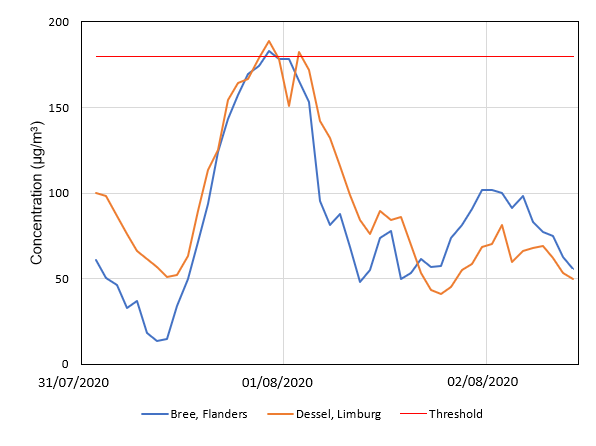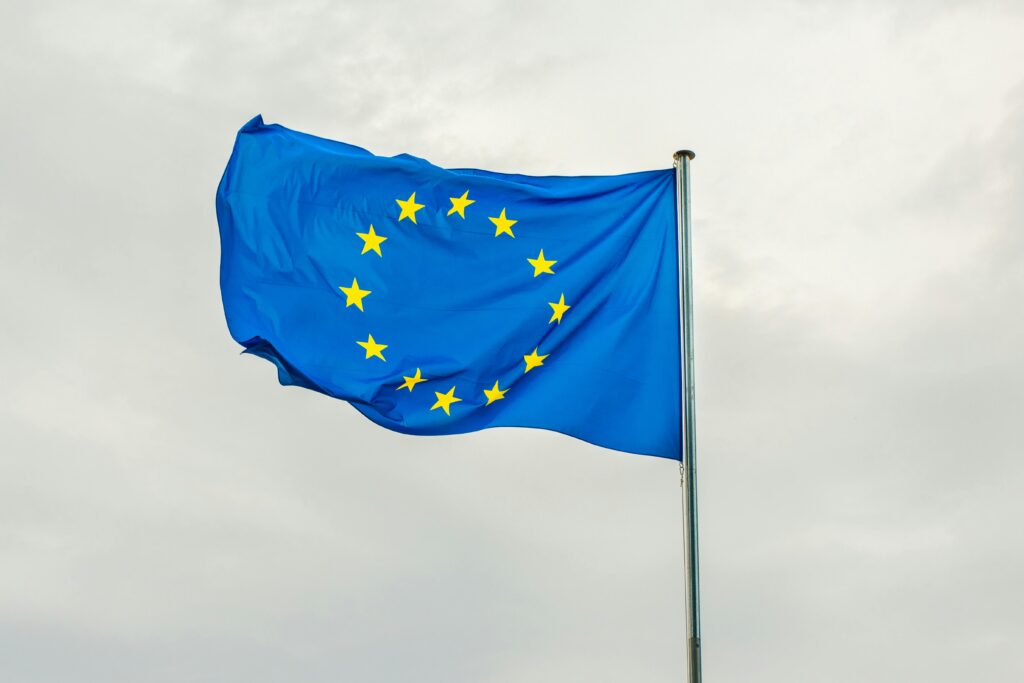Heat waves and ozone concentration
04/08/2020 The National Observatory in Uccle, Brussels detected a new historical heat record when the temperature reached 36.5°C on 31st of July 2020. This historical heat record is not only a reason to seek refreshment at our Belgian coast but also a perfect moment to think about air quality and climate change. Intensive sun activity can cause an enormous generation of ozone gas at the lowest layer of the atmosphere. This is the result of reactions between sunlight and pollutants (Volatile Organic Compounds, Nitrogen Dioxide, Carbon Monoxide, Methane) present in the lowest layer of the atmosphere.

For instance, ozone concentration exceeded the European Union limit of 180 µg/m3 in 2 regions of Belgium (Flanders and Limburg) on the 31st of July. The gas concentration profile is shown in the Figure below.

source: Vlaamse Milieumaatschappij (Irceline.be)
The Royal Meteorological Institute (RMI) has issued a forecast of another heatwave starting from Wednesday this week (05/08/2020) that can lead to elevated concentrations of Ozone.
Potential risks associated with exposure to high Ozone concentrations include:
- Make it more difficult to breathe deeply and vigorously.
- Cause shortness of breath and pain when taking a deep breath.
- Cause coughing and sore or scratchy throat.
- Aggravate lung diseases, such as asthma, emphysema, and chronic bronchitis.
- Make the lungs more susceptible to infection (COVID – 19).
- Continue to damage the lungs even when the symptoms have disappeared.
- Cause chronic obstructive pulmonary disease (COPD).
Here are a few tips and recommendations to minimise risks of health problems caused by high temperatures and Ozone concentration:
- Stay hydrated, drink more water than usual.
- Avoid alcoholic, caffeinated, and sugared drinks.
- Limit physical activities outdoors during the maximum solar activity period.
- Do not open windows during the day, ventilate premises after 21:00.
- Minimise usage of private transportation. Emissions from cars can increase Ozone generation volumes
Airscan helps public and private organisations to monitor and control both indoors and outdoors ozone levels to ensure the best living and working environments!
Learned something? Feel free to share.

Smart Cities: Keys to Achieving Excellent Outdoor Air Quality
See how smart cities achieve excellent air quality with smart tech, green spaces, and clean transport. Discover proven strategies for cleaner urban air.

Belgium updates its air quality index following stricter WHO Standards
In November 2022, Belgium’s air quality monitoring scheme, Belgian Air Quality Index (BelAQI), underwent a major revision to better reflect the health risks associated with air pollution. Managed by IRCEL – CELINE, the updated index now aligns with the World Health Organization’s (WHO) 2021 air quality guidelines, introducing stricter thresholds and faster reporting.

Europe Sets Stricter Air Quality Standards with Adoption of Directive (EU) 2024/2881
The European Union has taken a significant step toward safeguarding public health and protecting the environment with the adoption of the new European Air Quality Directive, officially known as Directive (EU) 2024/2881.





